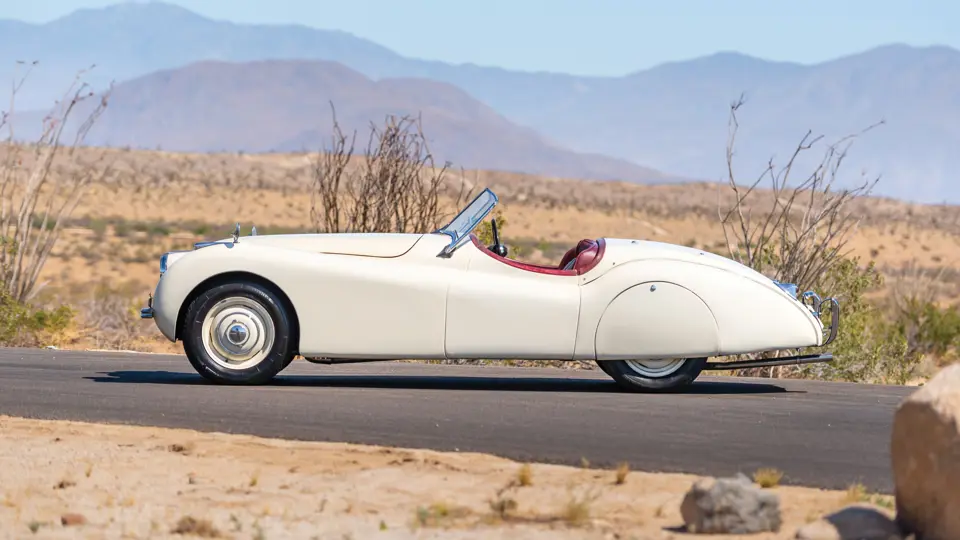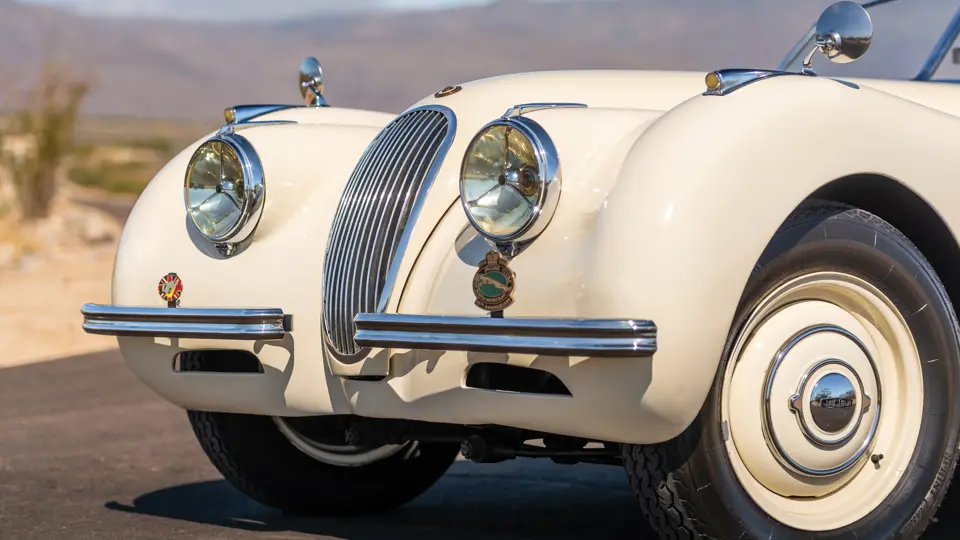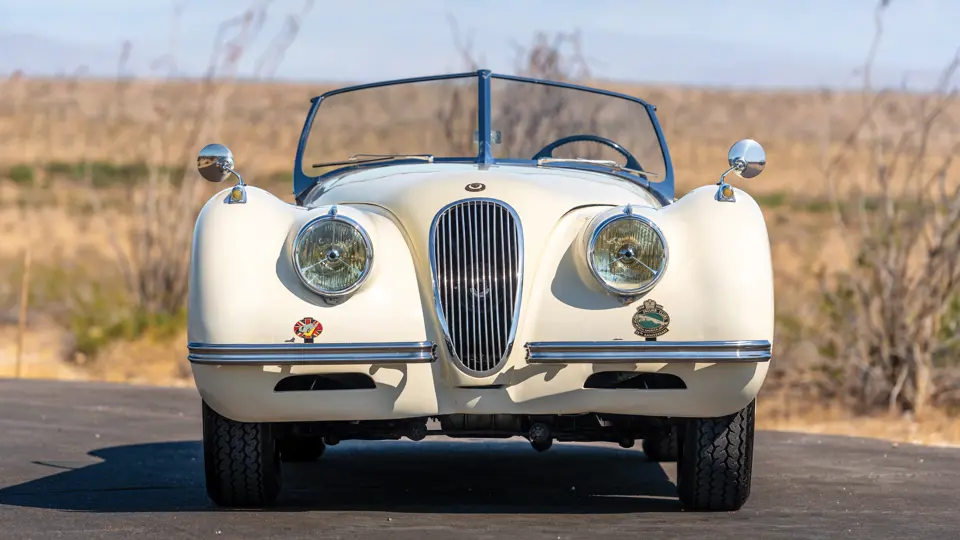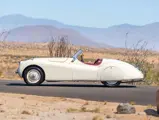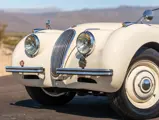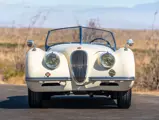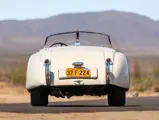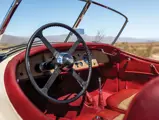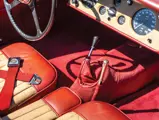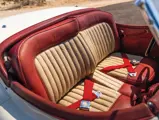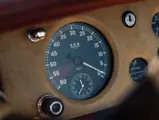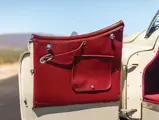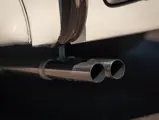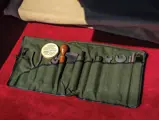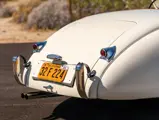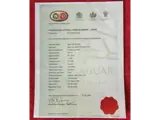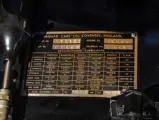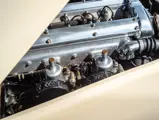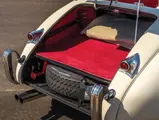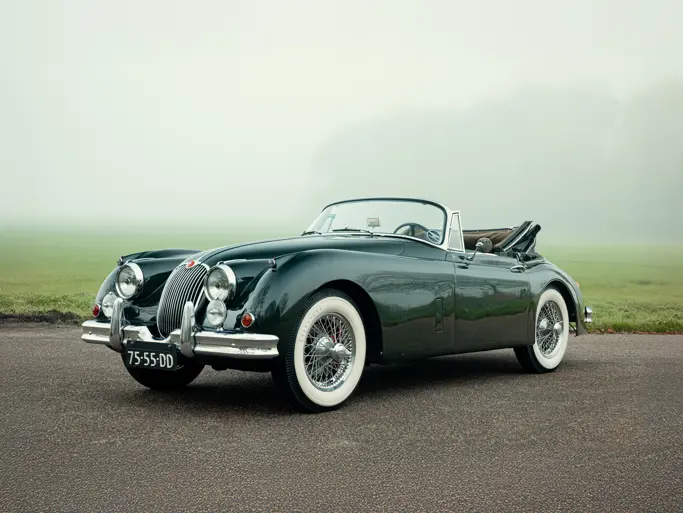The first Jaguar XK 120 was built in only six weeks for London’s 1948 Earls Court Motor Show, and it created a sensation, to say the least. The earliest cars were built with aluminum panels over a wood frame, since aluminum was light and easy to work and was not rationed like steel. Jaguar boss William Lyons originally planned to sell only 200 XK 120s, but at only £998, orders poured in so fast that he switched to steel bodies, which could be built much faster and in greater numbers.
With typically British understatement, the “120” signified the car’s top speed, and the new 3,442-cubic-centimeter double-overhead camshaft, six-cylinder engine pushed the new roadster to 126.8 mph in speed trials on a public road in Jabbeke, Belgium. That was half again as fast as most cars on the road in Britain at the time. Once the top was down and the windshield removed, shedding both drag and weight, factory test-driver Ron Sutton was timed at 141.51 mph. The Jaguar’s sensuous flowing lines and sparkling performance made it a huge hit with racers and enthusiasts alike, with perhaps the most famous example belonging to film legend and noted car enthusiast Clark Gable.
In all, 7,631 XK 120 roadsters were built from 1949–1954, and 2,678 coupes between 1951 and 1954. The weather-tight drophead coupe arrived last, with 1,769 produced in 1953 and 1954. Of the roadsters, only the earliest 242 examples were bodied in aluminum, and these earliest XK 120s are considered some of the most desirable examples, especially the 184 left-hand-drive versions, such as the example offered here.
According to the Jaguar Heritage Trust Certificate, this alloy-bodied XK 120 was completed on 6 February 1950 and delivered to the famed New York dealership of Max Hoffman on 23 March 1950. The Jaguar was finished in Pastel Blue paint over a two-tone blue interior with a Fawn top. Though its earliest history is unknown, it is believed to have spent most of its life in the western United States. The body and ash framework are said to be in original condition, with the current paint having been applied sometime in the 1970s. The JDHT certificate also confirms that the car is still fitted with its matching-numbers engine and gearbox.
A proper alloy XK 120 is a must-own in any serious sports car collection, and this is a fine example of the Earls Court sensation.




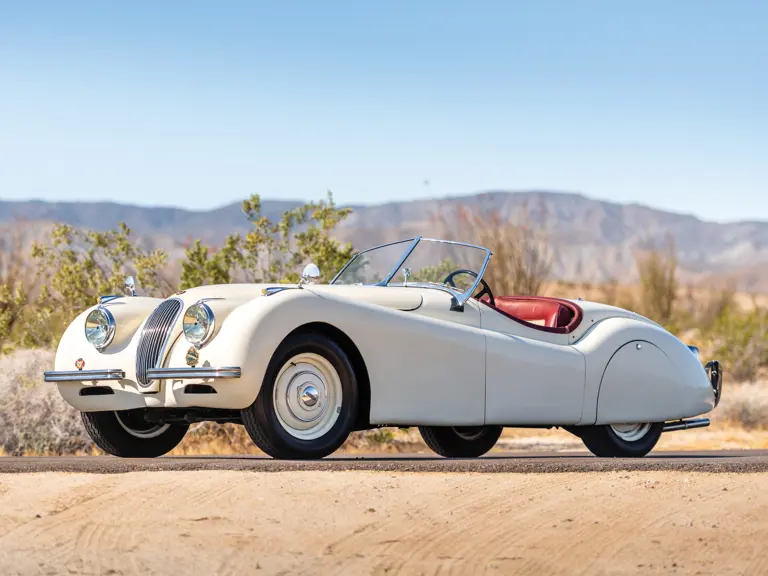
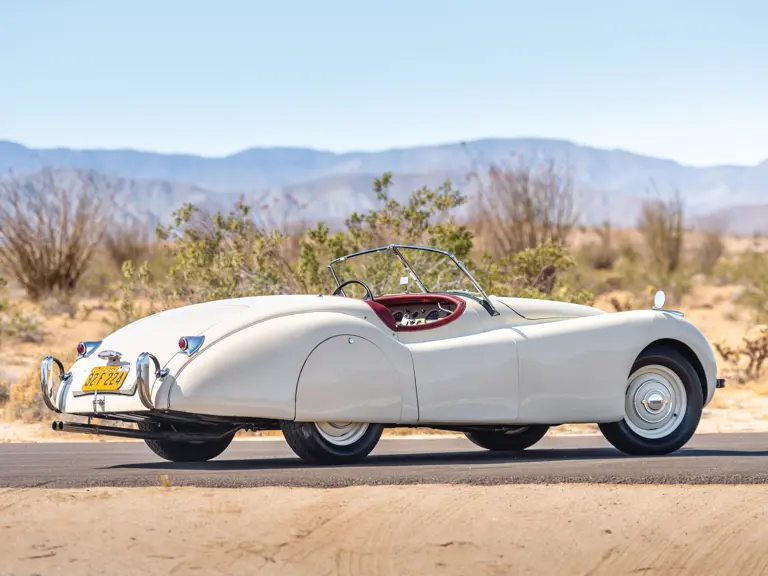
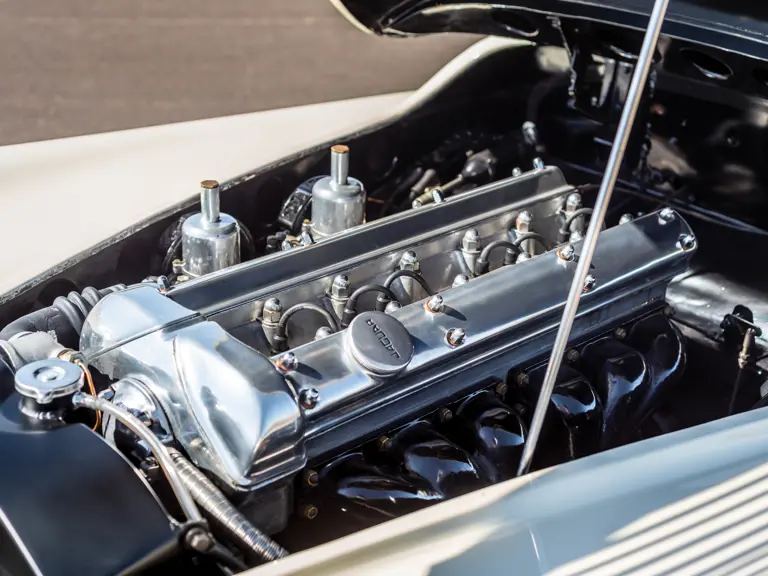

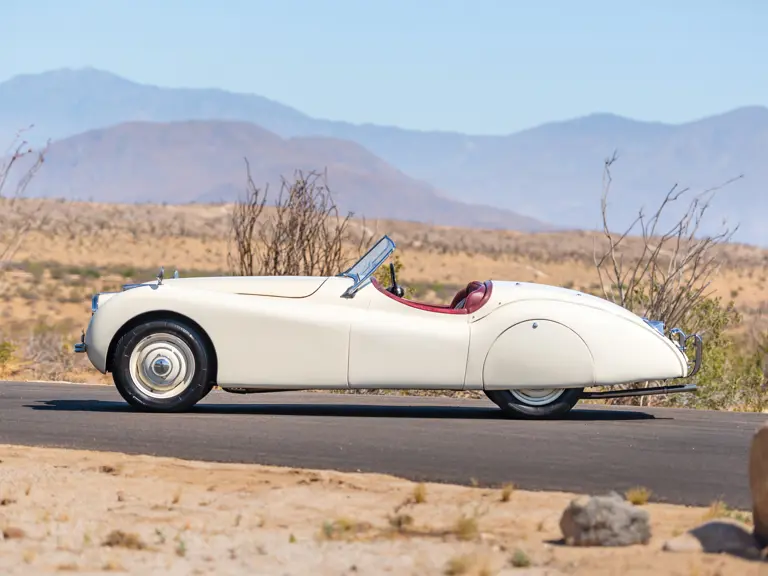
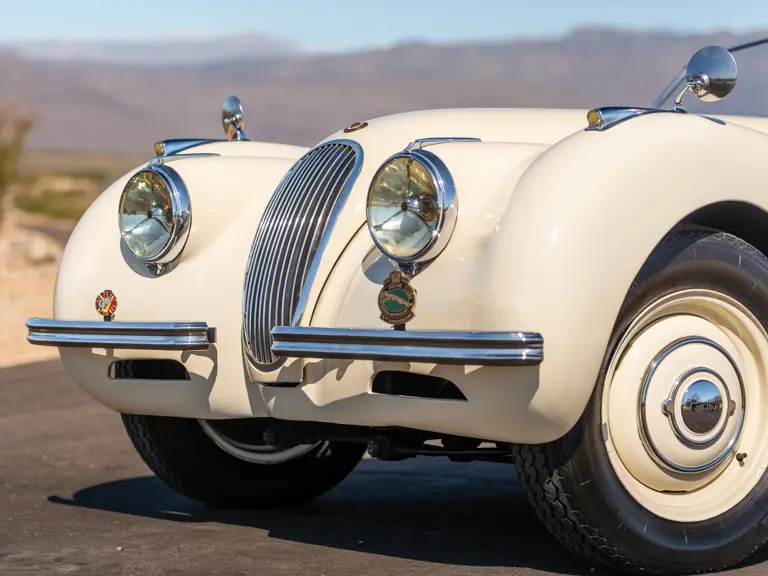
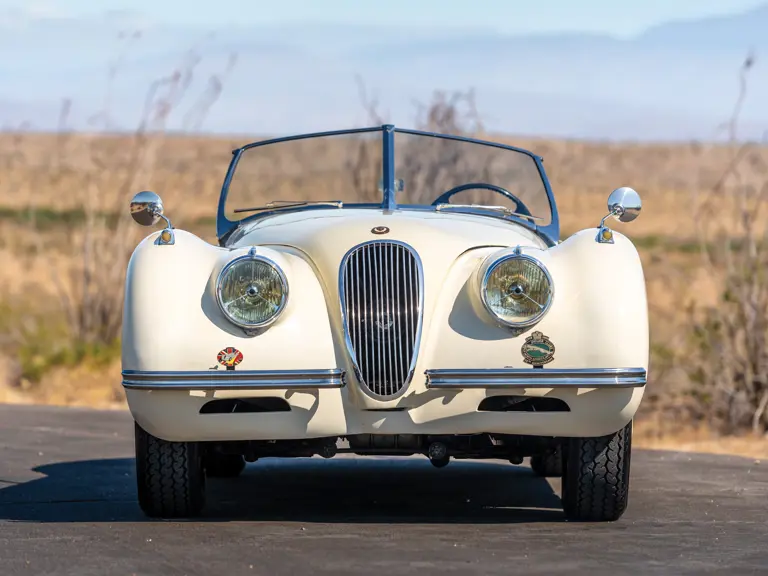
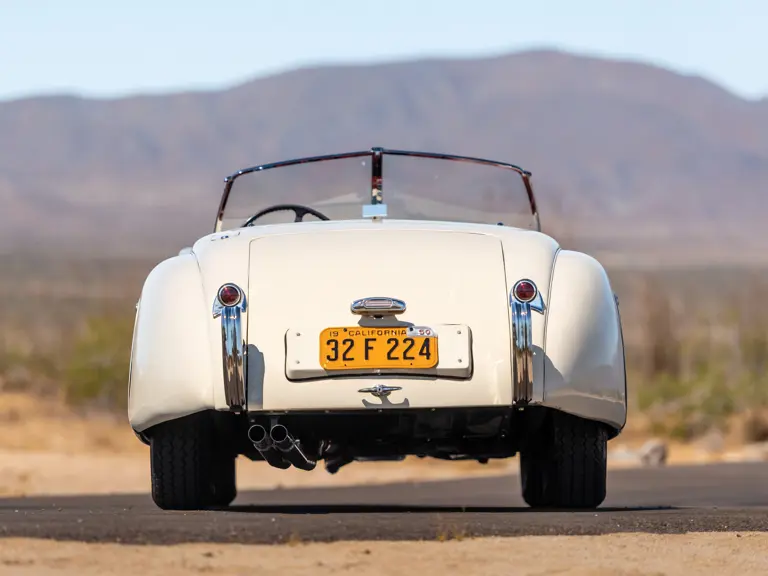
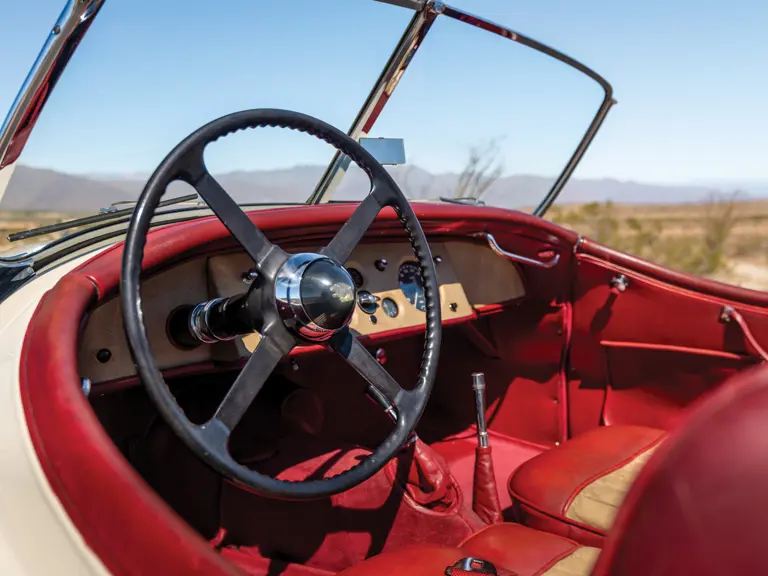

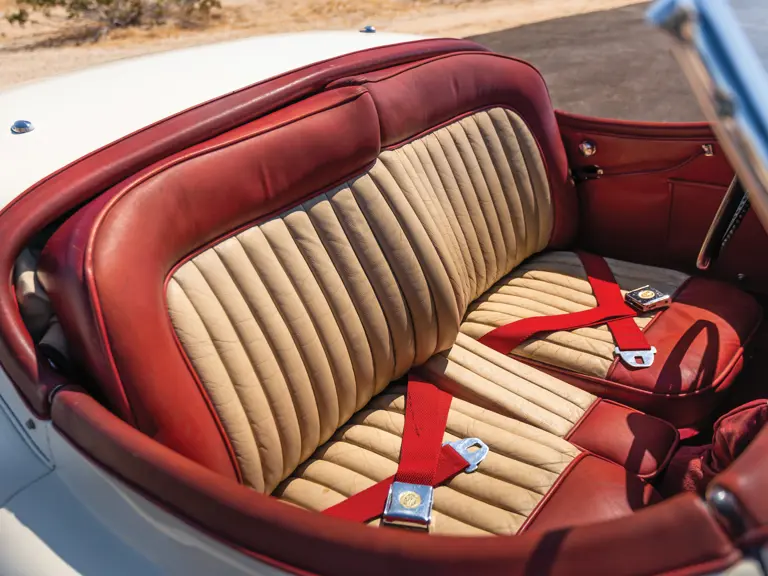

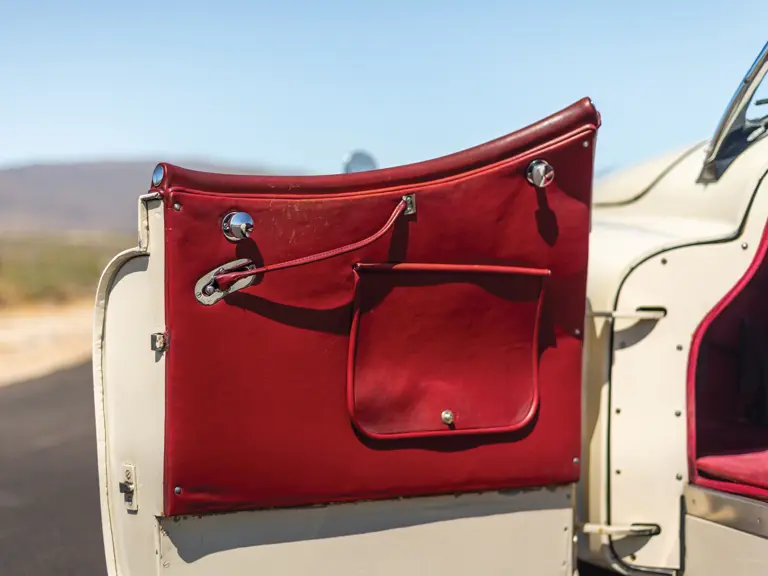
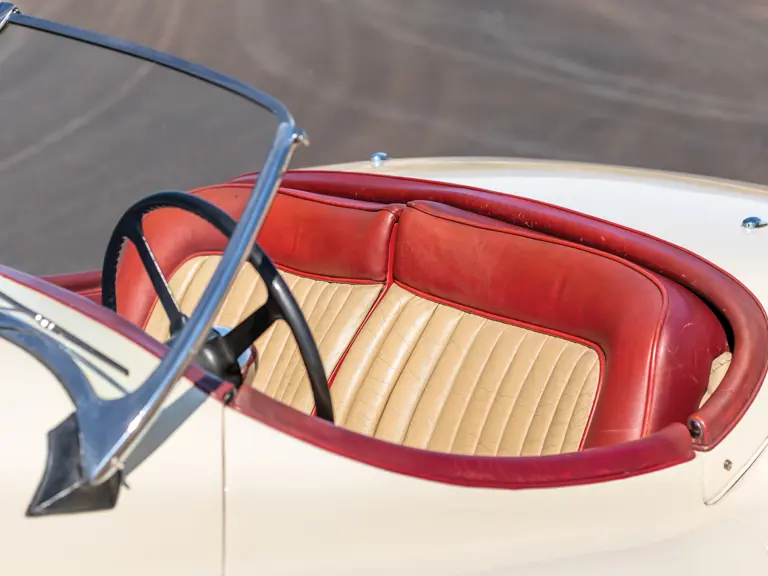
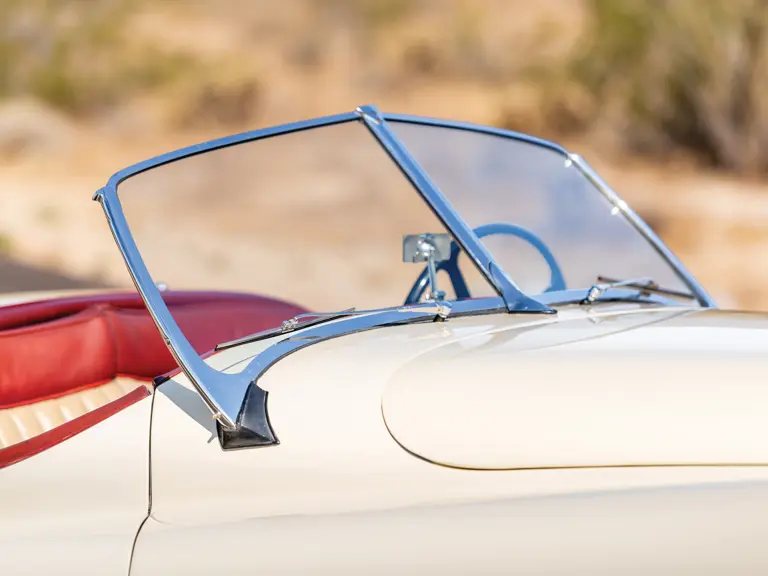
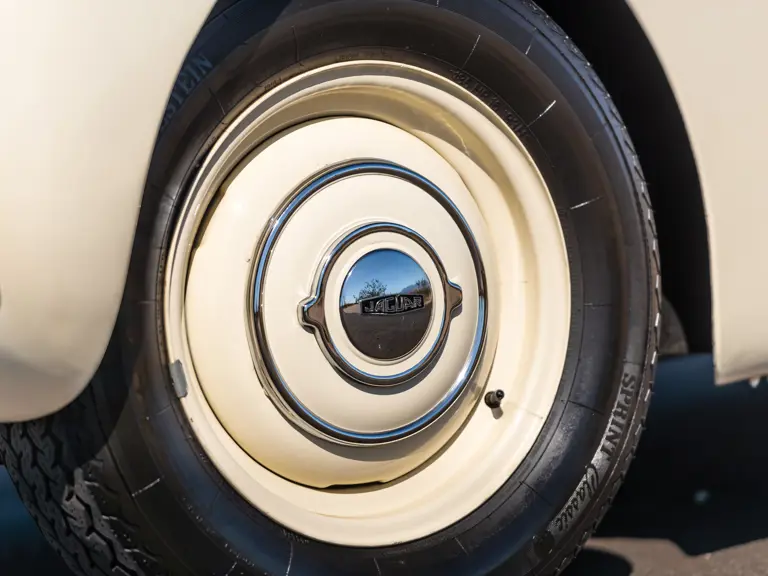
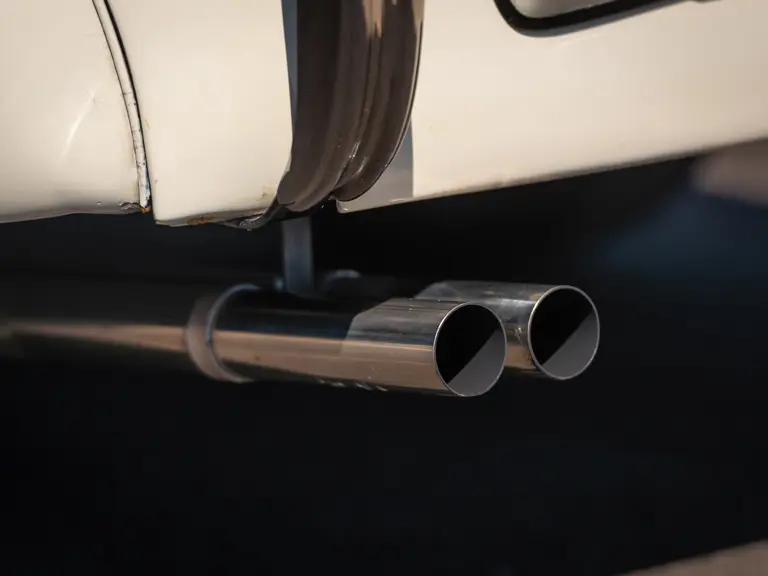
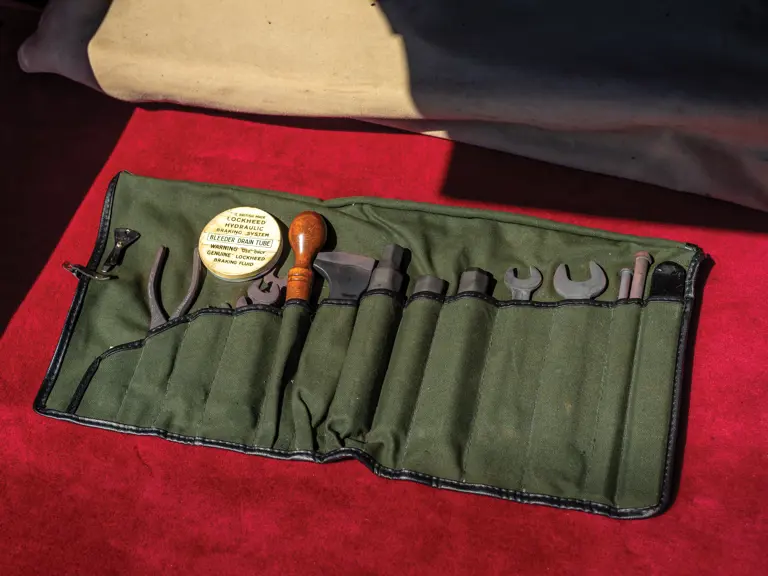
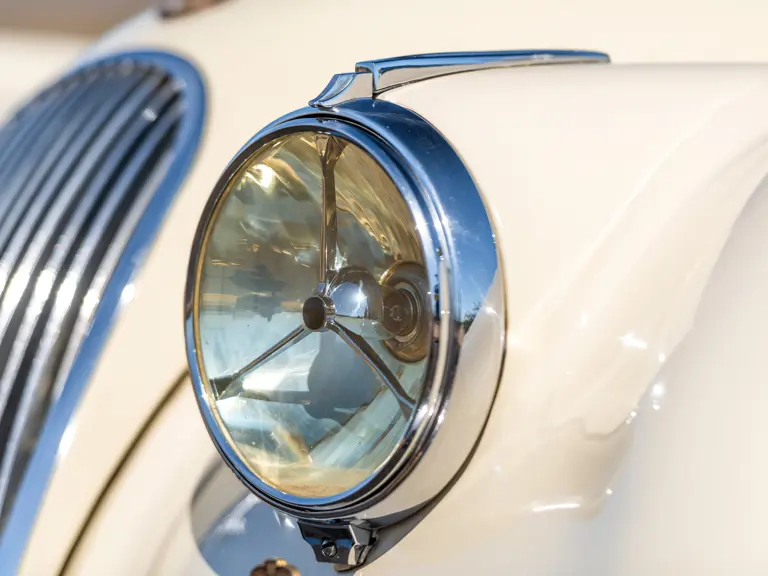
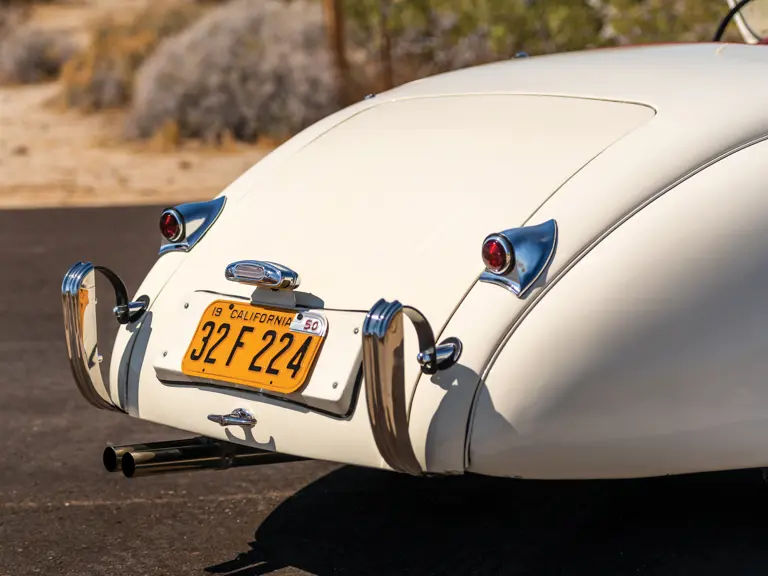
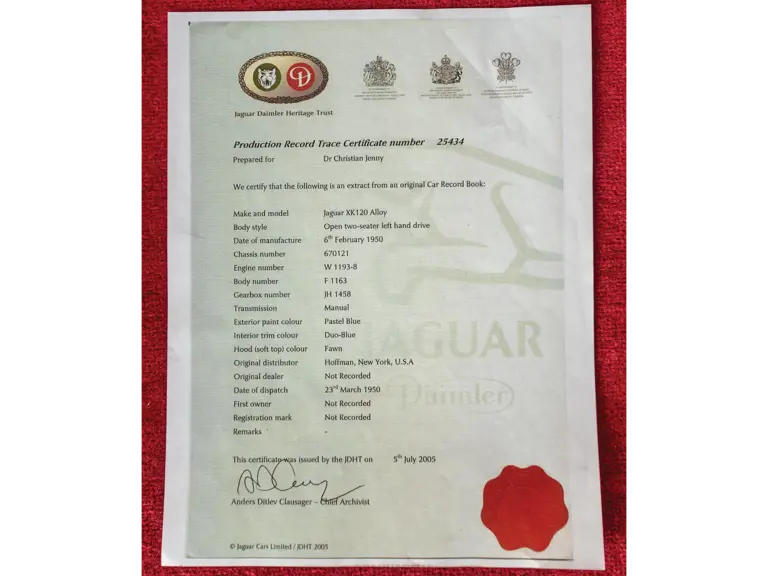
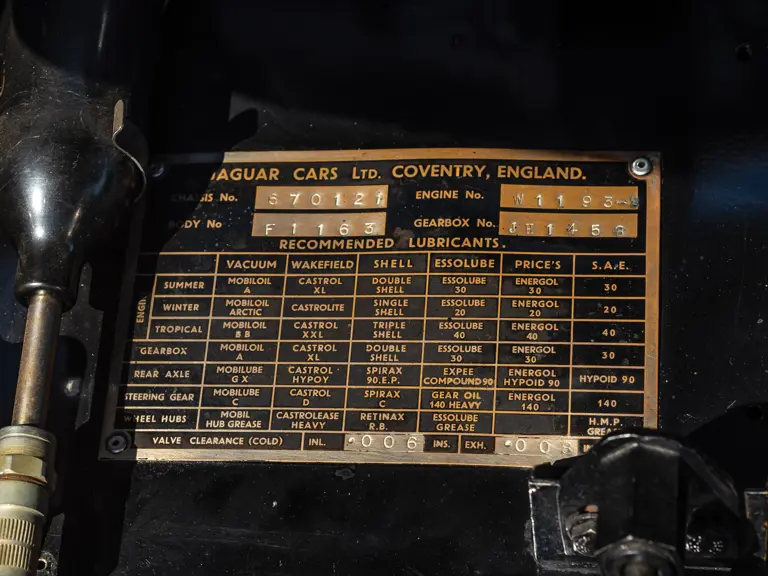
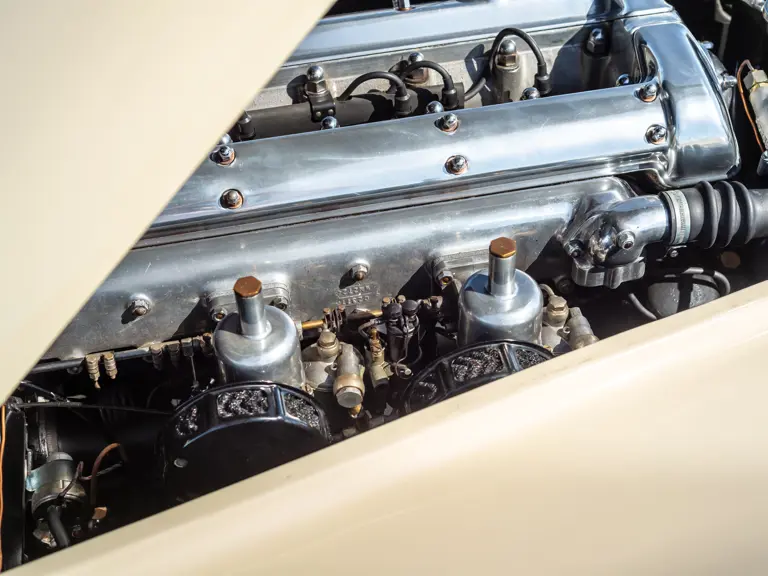

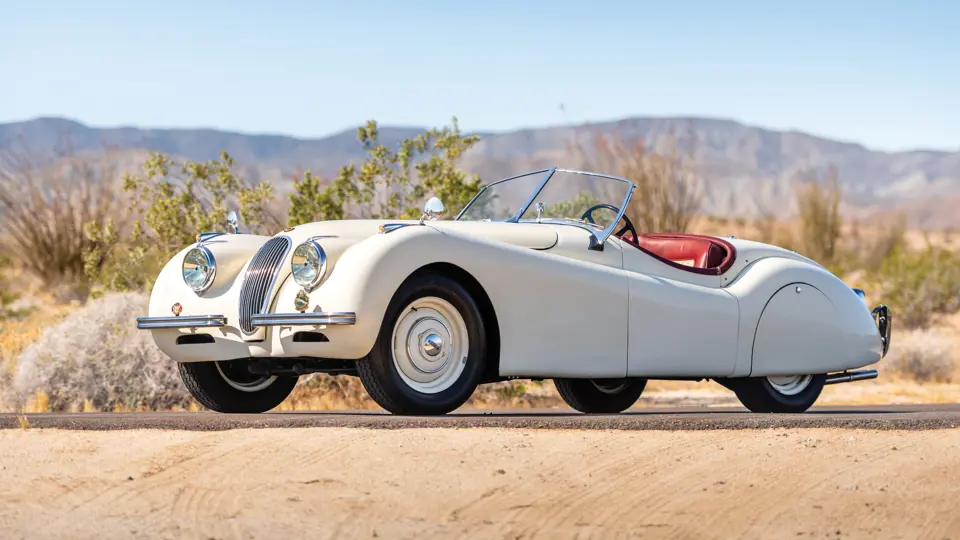
 | Monterey, California
| Monterey, California
